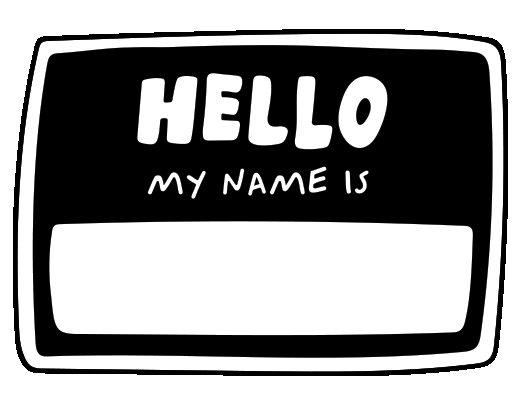Not all interviews have humans on the other side, but when they do, preparing to meet each person can really help you to feel prepared and to stand out from others they meet. Follow these steps to feel natural in the moment, create a connection beyond technical ability, and avoid offense.

Take these three steps to greet your interviewers with confidence:
- Know their name, pronunciation, and gender pronouns.
- Understand what they do in the organization.
- Find some things in common that might help casual conversation.
Get Names Right
Take some time to understand how each of your interviewers pronounces their name. This step sets you up for success because it can sometimes be hard to listen to names carefully at the beginning of the interview, a time when you may also be most nervous and it’s harder to stay present. Check LinkedIn profiles for an audio recording of their name (did you know that was a feature? Be sure to record one for yourself!) or perhaps you can find a video or other media with their name said aloud. If you’re prone to forget, create a mnemonic for yourself and write it discretely at the top of your interview notes.
Pronouncing someone’s name wrong or not using it at all can be offensive, so if you’re unclear, take a moment in the interview to ask and understand. There are natural opportunities for this at the beginning and end.
Here are a three suggestions, quick and direct is best.
- It’s great to meet you, Xavier. Did I say that the way you prefer?
- I like to get people’s names right, would you mind each saying them one more time before we get started?
- When we said hello at the beginning, I didn’t catch how you said your name. Would you mind sharing it again?
Be Comfortable With Pronouns
Expect that in your professional life, you will meet people who introduce themselves and indicate that they go by they/them, xe/xem, or uses no pronouns. Will navigating that be easy? If this topic is new to you, take the time to practice and broaden your language habits using this Gender Pronouns Resource Guide created by the Duke Center for Sexual and Gender Diversity.
You can also prepare to share your own gender pronouns when introducing yourself. For example, if I were to say, “It’s nice to meet you today, I’m Cameo Hartz, my pronouns are she/hers”, an anticipated response would be to share your own name and pronouns in reply.
Understand What They Do
Each person you interview with has some important connection to the role you want to fill, and to the decision-making process. In addition to looking up each person on LinkedIn, Google, and any salient professional platforms (a GitHub repo comes to mind), spend some time to consider, analytically:
- in what ways would I interact with this person in the role?
- in what ways would I impact or be impacted by this person in the role?
- what have they done, or are they doing, that I’m curious about?
- what interesting problems might they be solving in the day-to-day work right now?
The reason for this step is that it puts you into the mindset of colleague not applicant. If you’re learning, researching, and imagining these things it sets you up for advanced conversation that feels more like a coworker than an outsider.
Determine Some Things in Common
A second step to take with the research you’ve done into their professional background is consider what you have in common. This helps with casual conversation, making some of the awkward interview moments much more pleasant.
At the beginning of the interview, it is helpful to casually greet people and allow everyone to arrive completely, whether it be mentally or physically. This may include walking from one place to another together or arriving in a room or on a call. Creating an opportunity for everyone to take a breath, a sip of water, or anything else to transition into the interview creates a stronger start.
Here are a few questions that model something you could say during transitions:
- I learned we’re both fans of xxxx. What do you think about xxxx?
- I saw you posted/shared/contributed/were featured xxxx recently. How did that go? (Stick to publicly available information; LinkedIn, GitHub, and other professional communities are okay.)
Your goal is to ask questions that are easy to answer quickly and generally neutral in emotion. Remember that your goal right now is to aid the transition, not create a big conversation. If your interviewer is chatty, that’s great! It’s okay to follow their lead and discuss further. It’s a great signal your interview is off to a good start.

